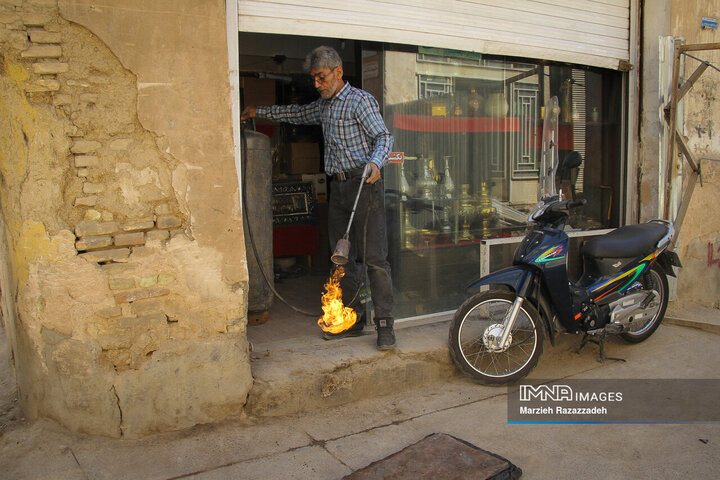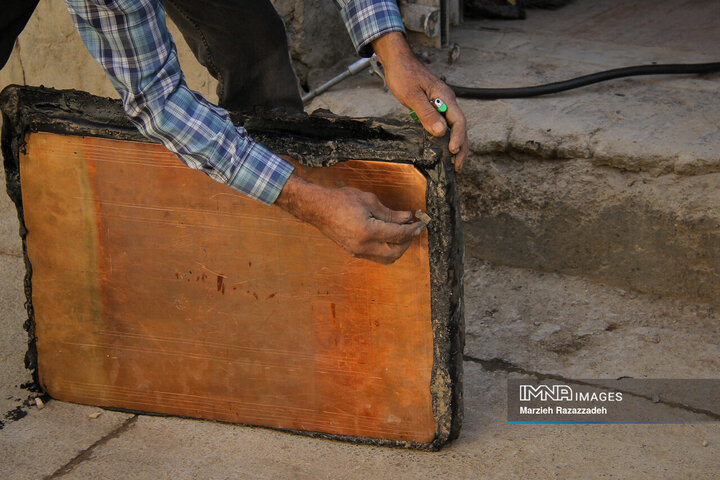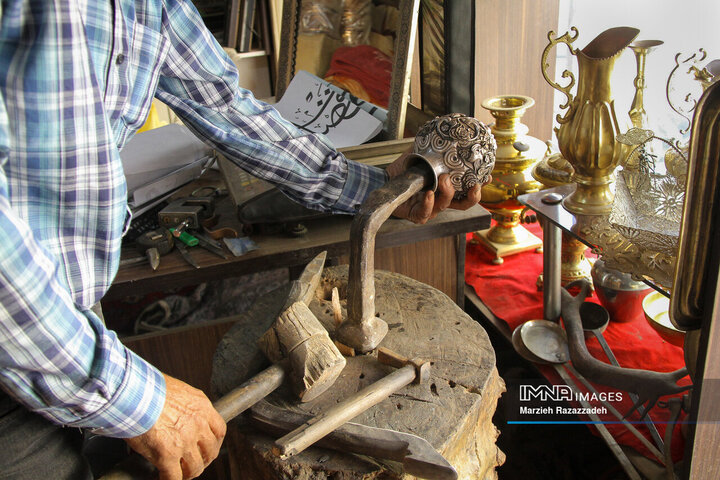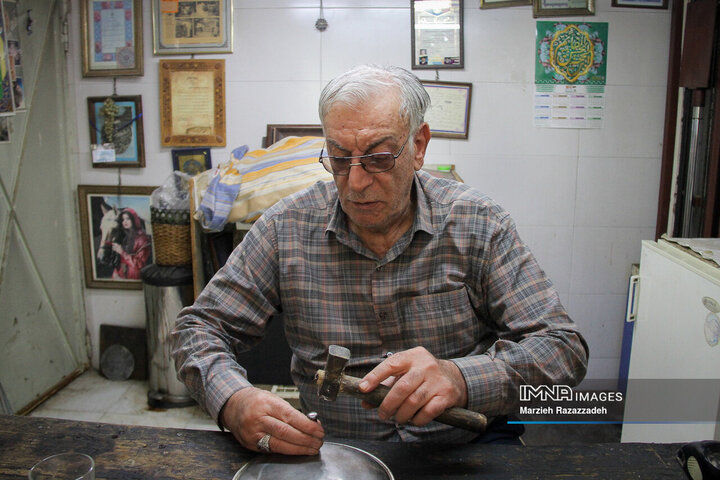Home to UNESCO-protected marvels and architectural masterpieces, Isfahan is also legendary for its meticulous artisans honing skills even for decades at vaulted arcades in the ancient Iranian city.
Iran (IMNA) - Toreutics, better known as Ghalamzani by the locals, is the embodiment of such know-how passed down from generation to generation.
It is the art of creating ornaments in relief or intaglio, through chasing, carving, and embossing in metal objects. Ghalamzani is executed on various objects, such as vases, plates, sugar bowls, candlesticks, teaware, tablets, and other ornamental objects. Some say that old-hand veterans of the field are national treasures today.
Broadly speaking, Ghalamzani has developed into several styles, named after the cities of origin: Shiraz, Tabriz, and Isfahan.
Let’s get a quick peek into the craft. The first step is to choose a favorite copper plate or copper container. Secondly, the object is filled with molten bitumen to prevent being punctured due to the intensity of the blows. It also helps reduce the amount of loud noise created.
The next step is to attach a series of patterns, which are nowadays sketched on a piece of parchment paper. Now, it is time to engrave them on the copper surface using a mandrel and hammer.
In conclusion, bitumen is melted to clean the inner layer. Then, the sketched decorations are painted with black charcoal powder, and finally, the whole body of the vessel is polished using special oil.
There is evidence that Ghalamzani may have initially practiced in the third and second millennium BC. The pinnacle of the art is reflected in the beautiful gold and silver vessels of the first millennium BC, excavated in the northwest, north, and west of the country.
Their success also owes to abundant copper mines that made it easy for craftsmen to obtain metal ores as a raw material.
Many indigenous crafts around the world are in danger of dying out, but in some places, such as Isfahan, efforts are still being made to save them.




















Your Comment